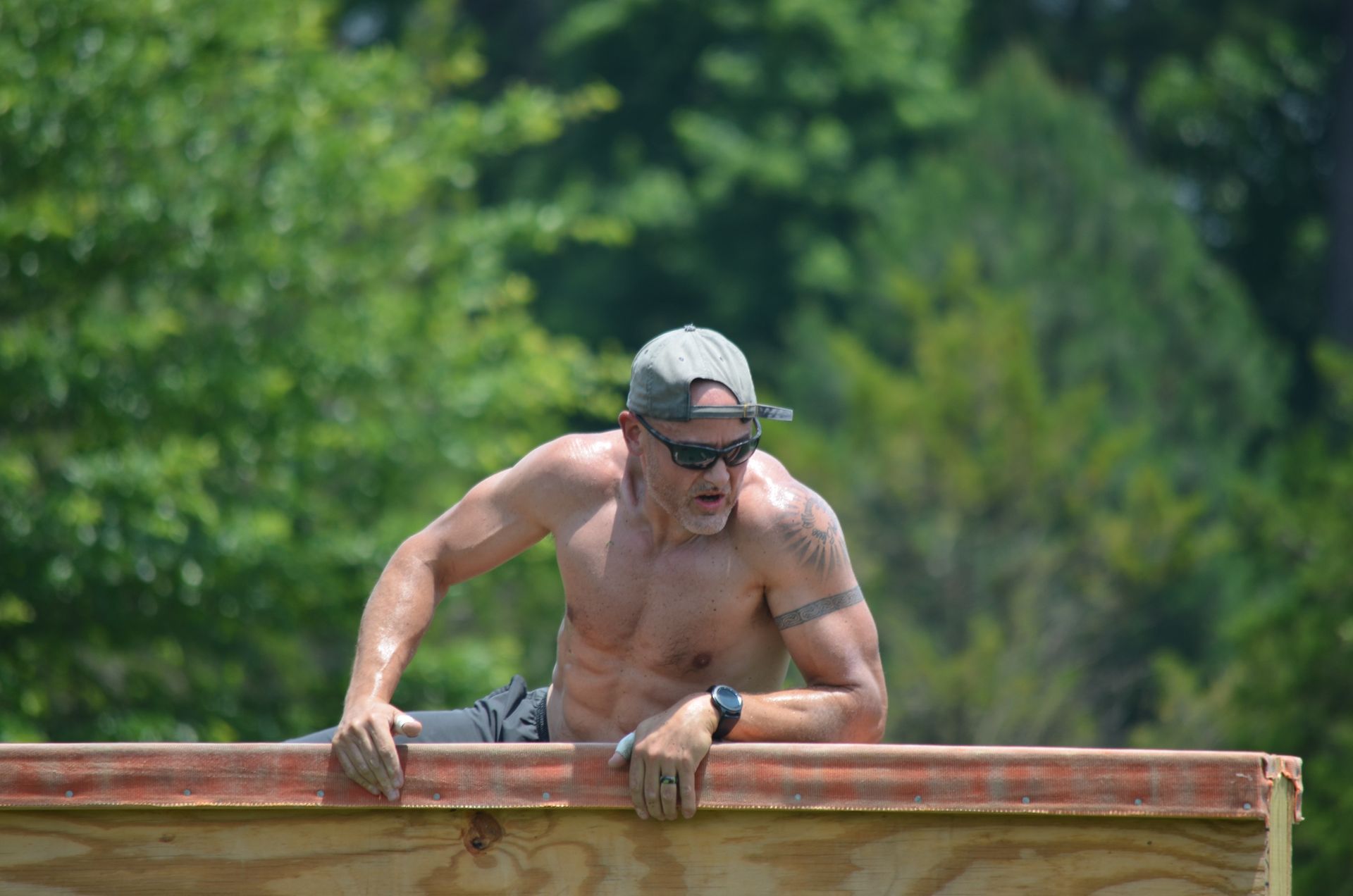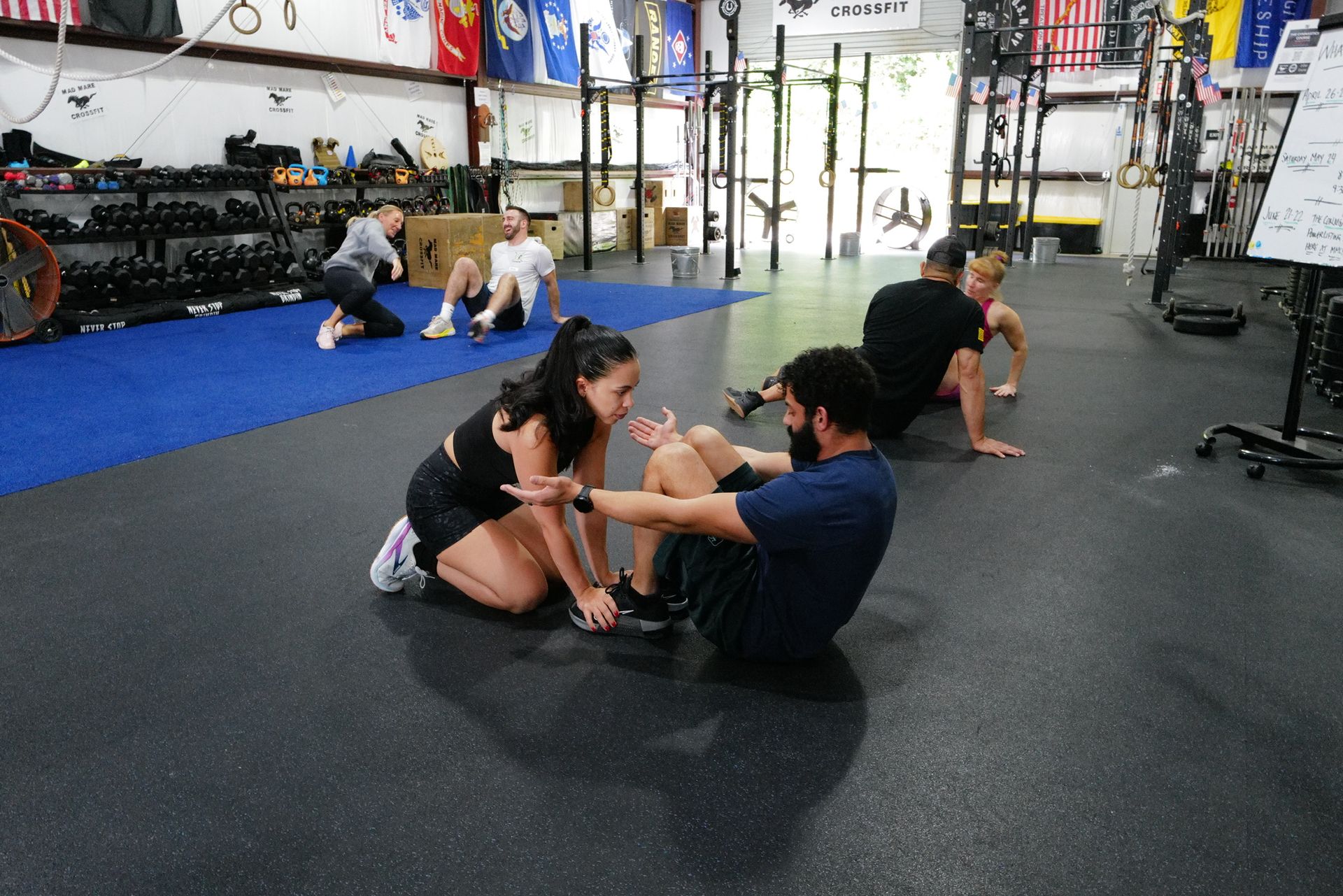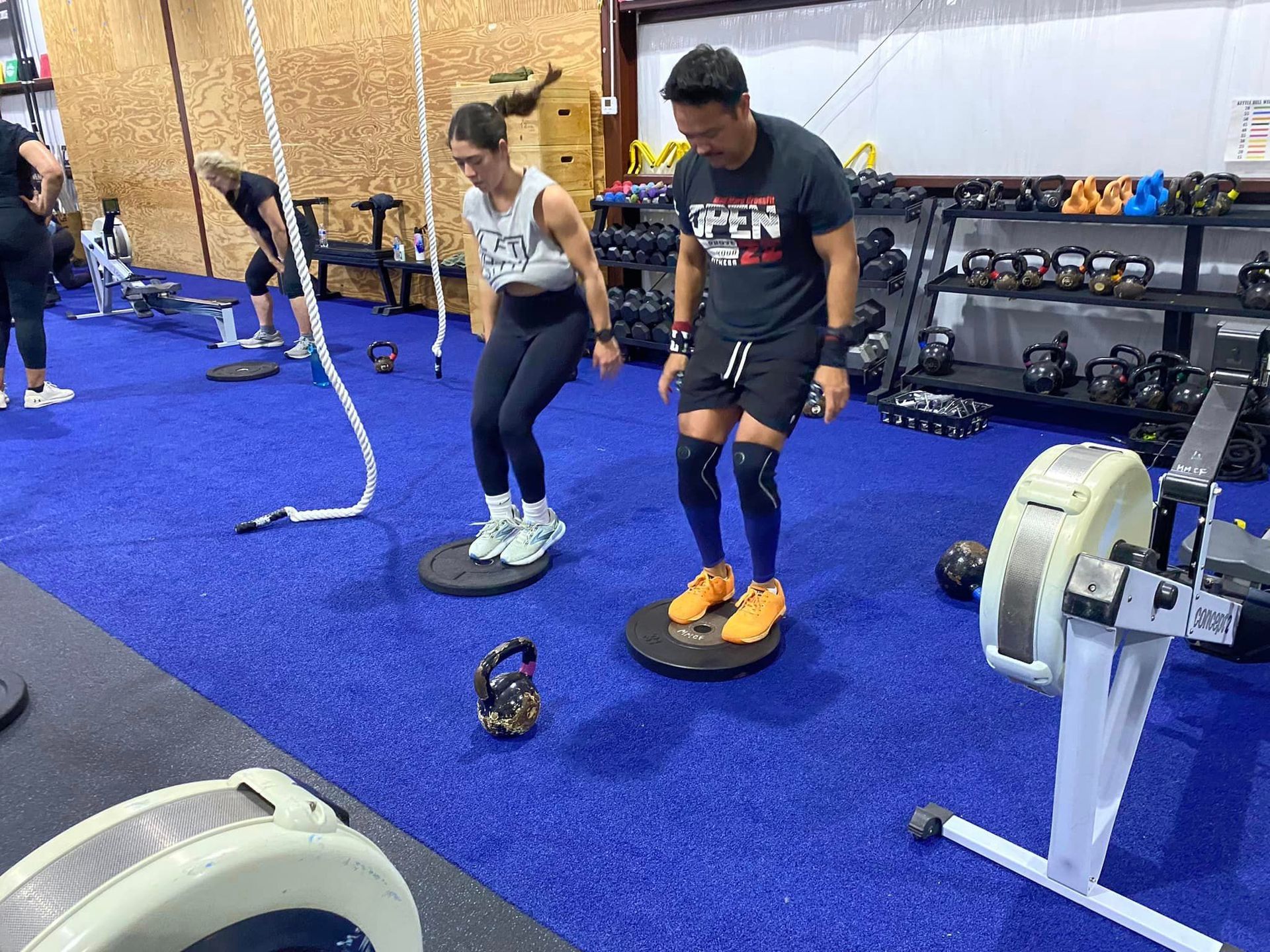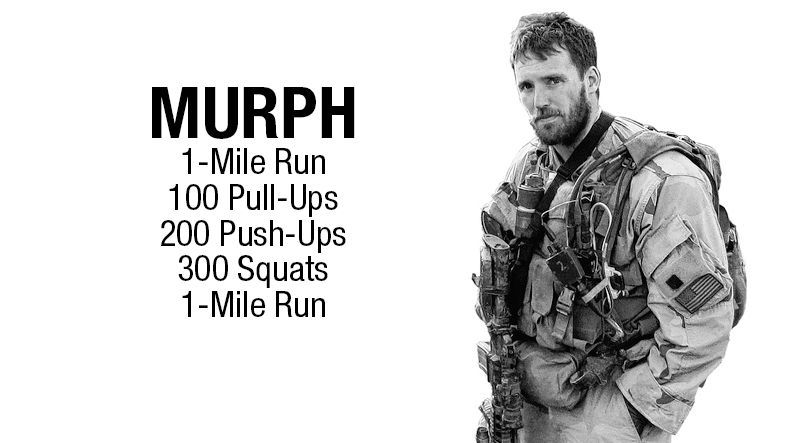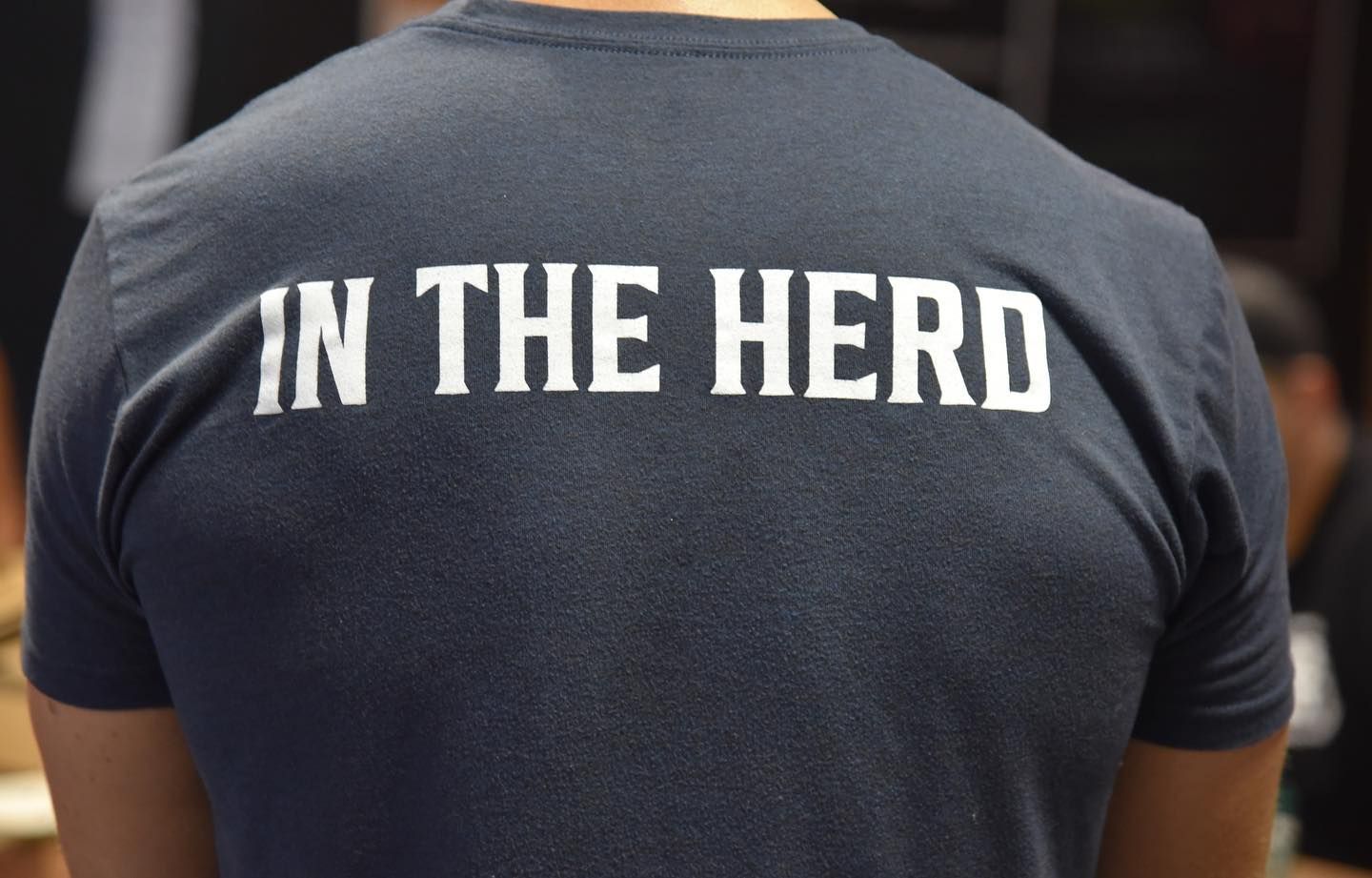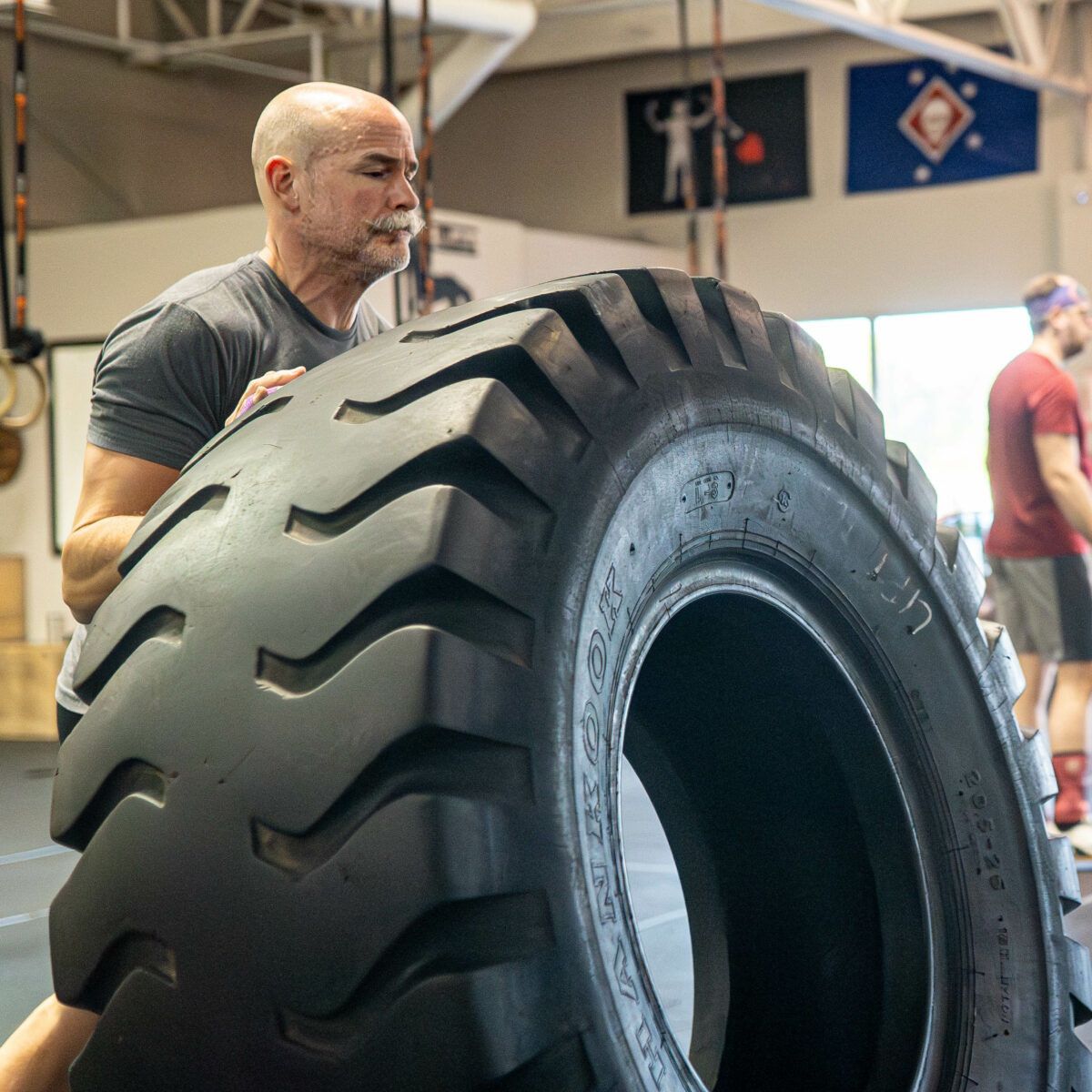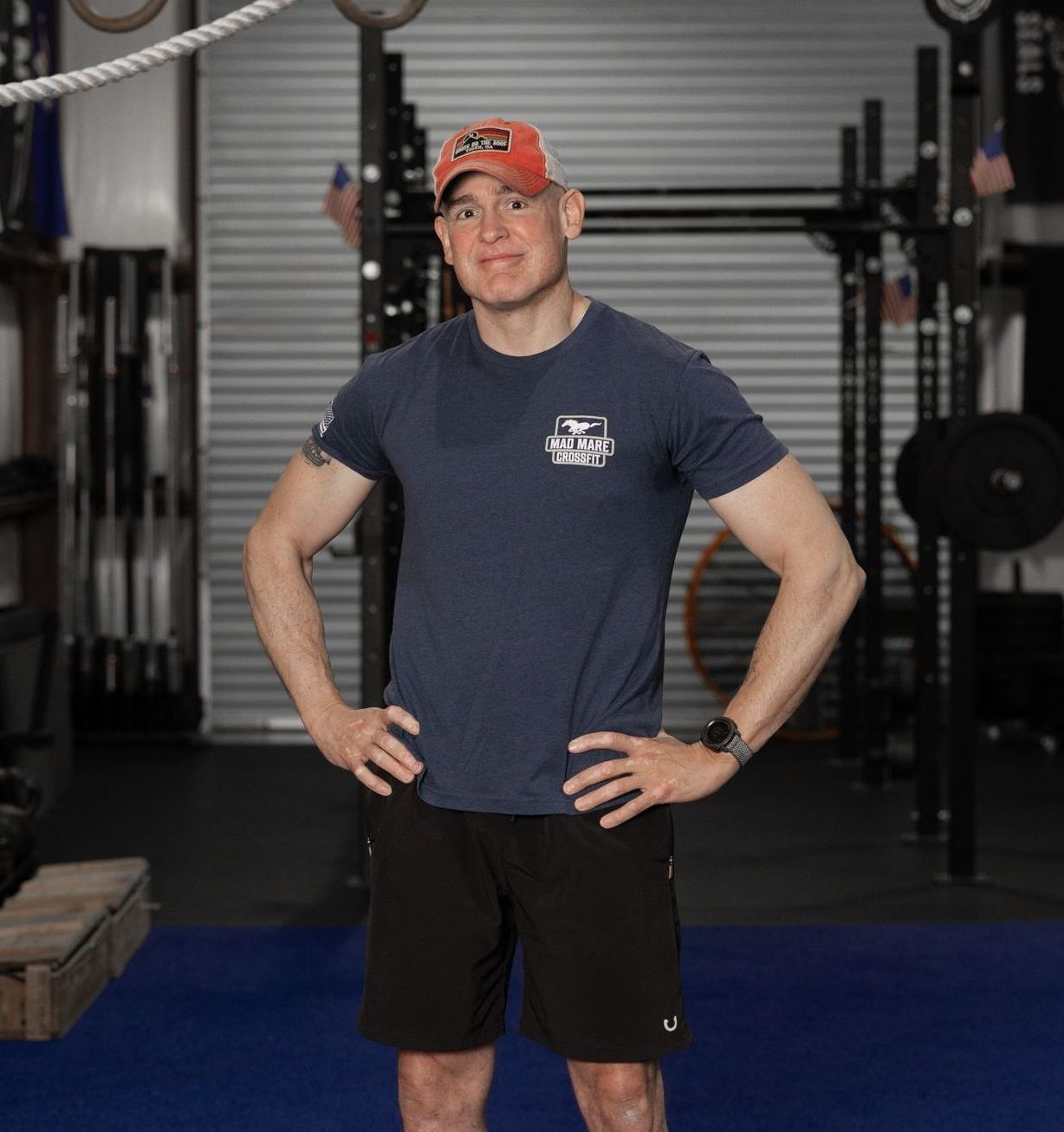Coaching Aging Athletes
Coaching Aging Athletes: How Mad Mare CrossFit Models Aimee Lyons’s Approach
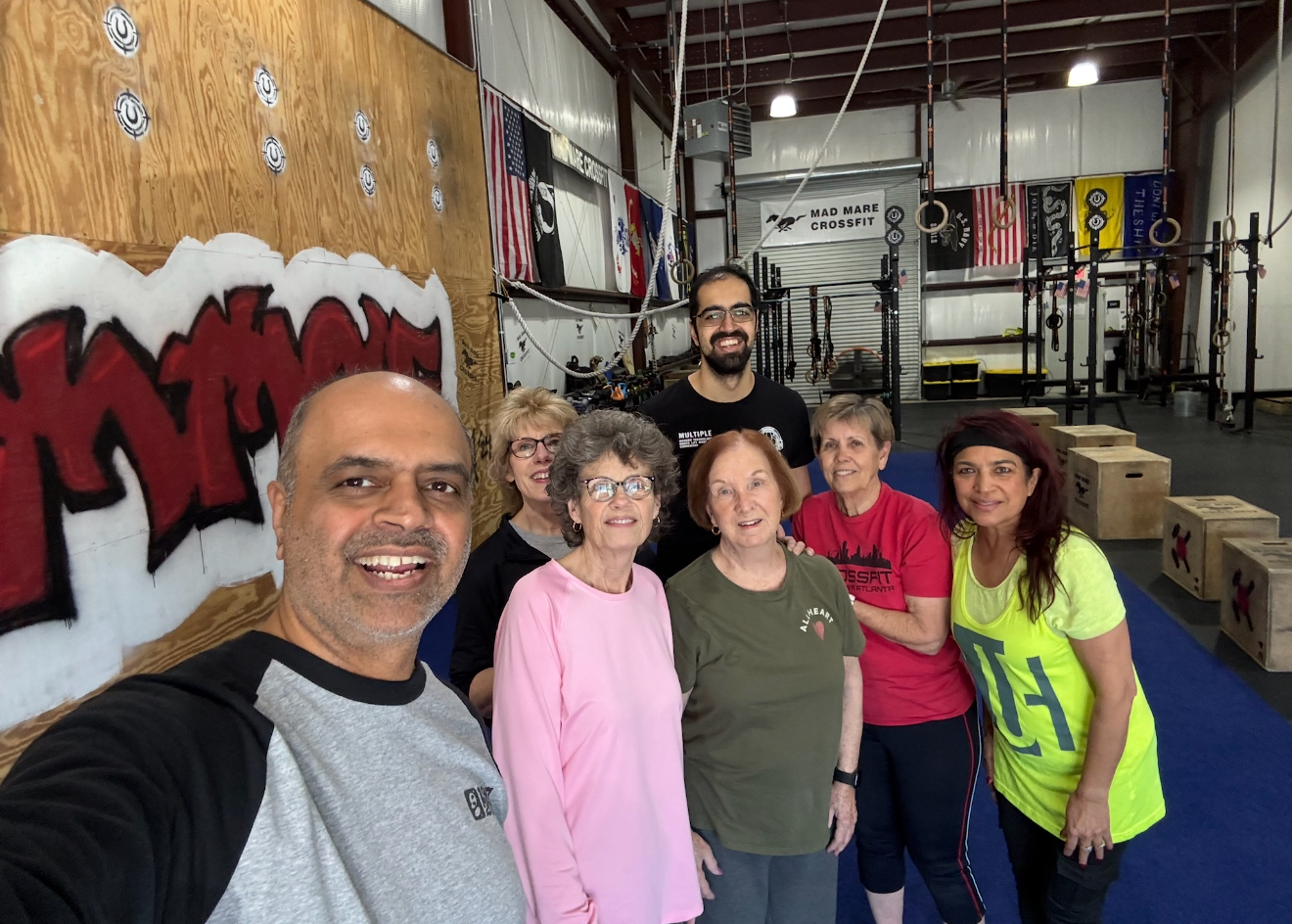
Hey, we truly believe that “CrossFit is for Everyone, and as CrossFit gyms strive to serve athletes across all ages, understanding how to scale workouts for older members is absolutely vital. Similar to Aimee Lyons, Mad Mare emphasizes an adaptive, principles-first model that balances fitness with safety and long-term health. There’s a video of Amiee’s “Master’s Class” (we call ours “Functional Fitness for Active Adults”) that you can watch here:
At Mad Mare CrossFit, we see these strategies in action every single day. We greet everyone at the door with a smile, and people can feel the individual attention with their first step inside. Every person that walks in (we call everyone an athlete—because you are) knows that we understand what it’s like to want to grow and improve together. Everyone knows each other, and our classes are built around being a part of a community.
That aside, let’s dig in. I’d like to outline a step-by-step comparison of how a class at Mad Mare stacks up! Let’s dive in!
1. Extended, Intentional Warm Ups
In her class and inside the article from crossfit.com, Lyons notes that older athletes benefit from slower, more thorough general warm-ups—gradually elevating their heart rate, followed by mobility exercises targeting joint lubrication. You can read the entire article if you'd like here:
At Mad Mare, we begin Functional Fitness for Active Adults classes with extra time of low-impact rowing, biking, or walking, then move into targeted mobility flows—hip openers, shoulder circles, ankle rocks—perfectly aligning with Lyons’s emphasis on joint care. We may seem like we spend a lot of time in “circle”, but your bodies will thank you for it! The picture below is our friend Kishore during a specific warm-up doing some kettlebell goblet squats!
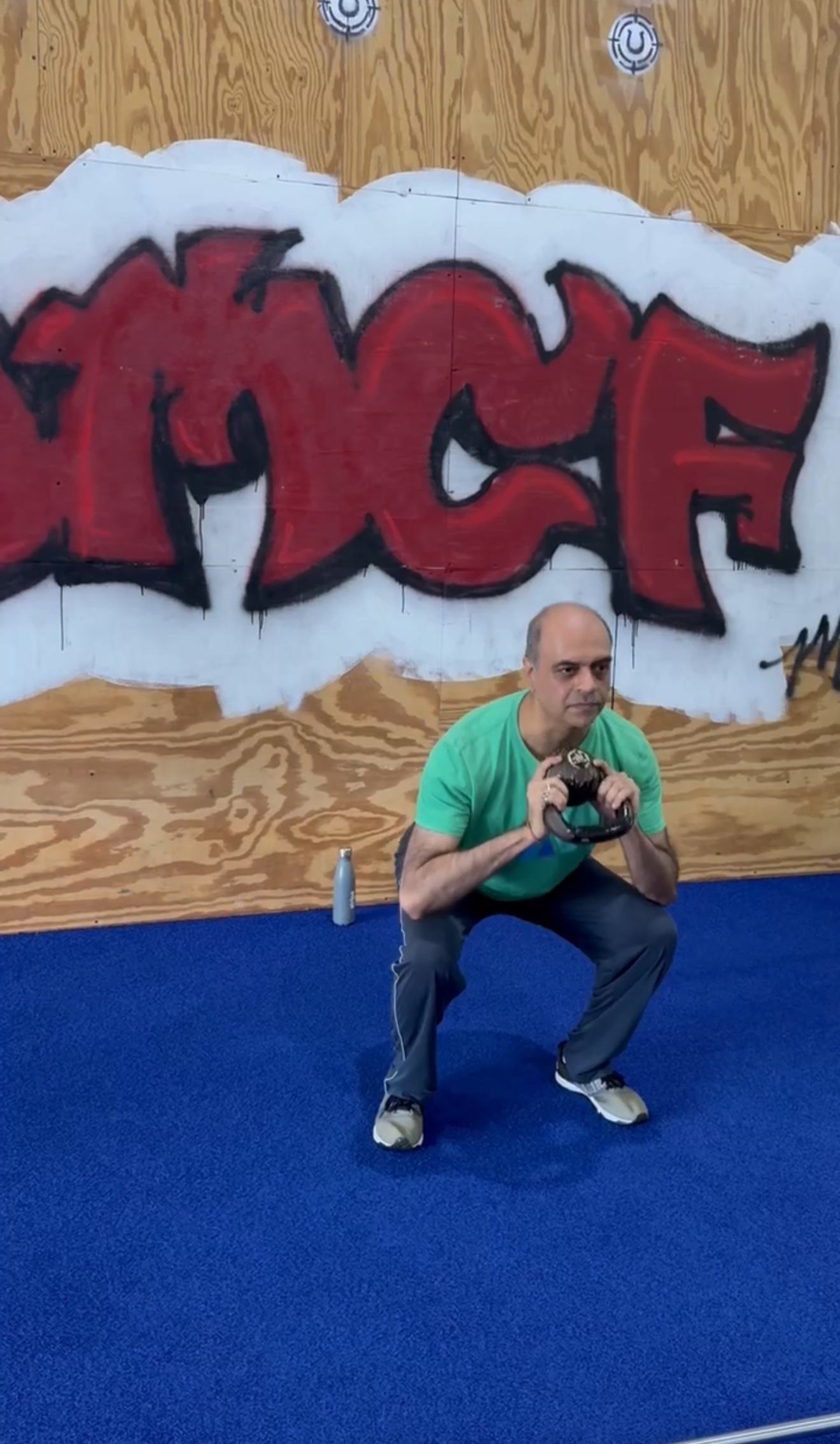
2. Technique-First Specific Preparation
What you’ll notice straight away is the individual focus that Amiee gives each athlete during their specific warm-up. We call this “progressions”. During the progressions phase (or specific warm-up) of our class, we help individual athletes learn and also determine what the best scaling option is for them for that particular day. Sometimes progressions may seem like an extended warm-up, but keep in mind – we are doing our best to challenge you and help you grow!
Lyons advises focusing on form before intensity, especially for complex lifts. She suggests easing into range-of-motion work and gradually adding weight.
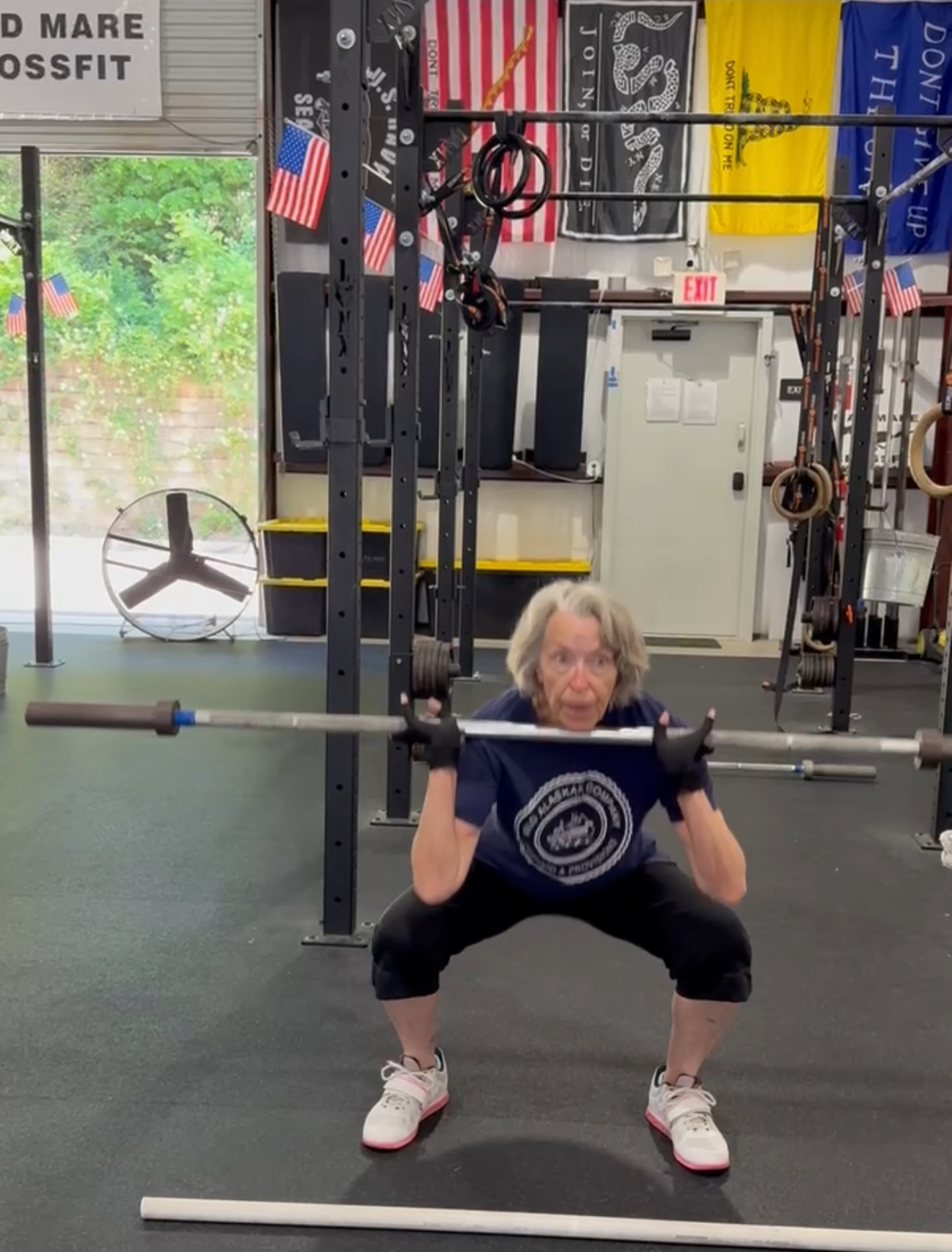
We also mirror this at Mad Mare: our scaling sessions include PVC drills for things like squats, thrusters, or presses, cueing strict mechanics. Just like our member Sherry in the picture above, we often use a PVC pipe to build confidence before loading and switch up to a techniques bar prior to adding weight. Sound mechanics are always first, followed by consistency, and finally adding intensity by either increasing frequency or load.
3. Adaptive Workouts: Intensity Over Volume
Lyons highlights the need to adjust intensity and volume—not eliminate challenge (notice the “challenge face” on Tony below)—and suggests keeping the WOD’s stimulus by shifting formats (e.g., Rx “rounds for time” → AMRAP).
At Mad Mare, somedays workouts like “20-minute AMRAP of wall balls and kettlebell swings” may take the place of runs. If you can still move like Mike (yellow shirt above), well, go ahead and run, but instead of a 400 m run, members might do a brisk 2-minute walk, hop on a rower, or ride a bike. Still intense, but within safe limits.
4. Substitutions that Preserve Purpose
Creative substitutions are key, Lyons says—try to use items like a “bag of potatoes” instead of heavy barbells, or a PVC for balance. We’ve never brought bags of potatoes in the gym, but at one point or another during your time at Mad Mare, you might have heard Coach Tony’s analogy to a “bag of mulch”. I know a lot of y’all might not do gardening anymore, but that one always reminds me of the proper way to pick up something heavy and awkward!
For members concerned with balance, we program box style push-ups or wall-supported air squats. We have also used PVC pipes like “Gandalf’s Staff” when lunging. Here’s our friend Pat performing lunges in this year’s CrossFit Open (under the watchful eye of Coach Vicki) and our loyal member Charlotte performing box push-ups!
5. Cooldown and Stretch
Mobility is a huge focus at Mad Mare, and this is somewhere that I think we shine. Classes will always end with a cooldown and a group stretch. That might mean going for a 200-m walk as a group, and it will definitely mean mobilizing the joints and muscles that you used during the workout. Cooldown and mobility work after a workout are especially important for aging adults because they help lower the heart rate gradually, reduce muscle stiffness, and support joint health. Mobility exercises improve flexibility and range of motion, which can reduce the risk of injury and make everyday movements—like bending, reaching, or getting up from the floor—easier and safer. This recovery time also reinforces healthy movement patterns and supports long-term function.
6. Cultivating Community and Social Support
Perhaps most powerfully, Amiee Lyons underscores social connection as a major motivator for older athletes. Did you know that exercise in a social setting can be a powerful tool for helping older adults prevent or delay the onset of dementia—more so than exercise or socialization alone? The evidence is there—do your own research! Here are a few resources for you to start reading.
· A 2018 study in The Lancet identified
social isolation and
physical inactivity as modifiable risk factors for dementia. Addressing both may prevent up to
35% of cases.
· A 2020 review in Frontiers in Aging Neuroscience found that group exercise improved
cognitive function and mood in older adults significantly more than solitary exercise.
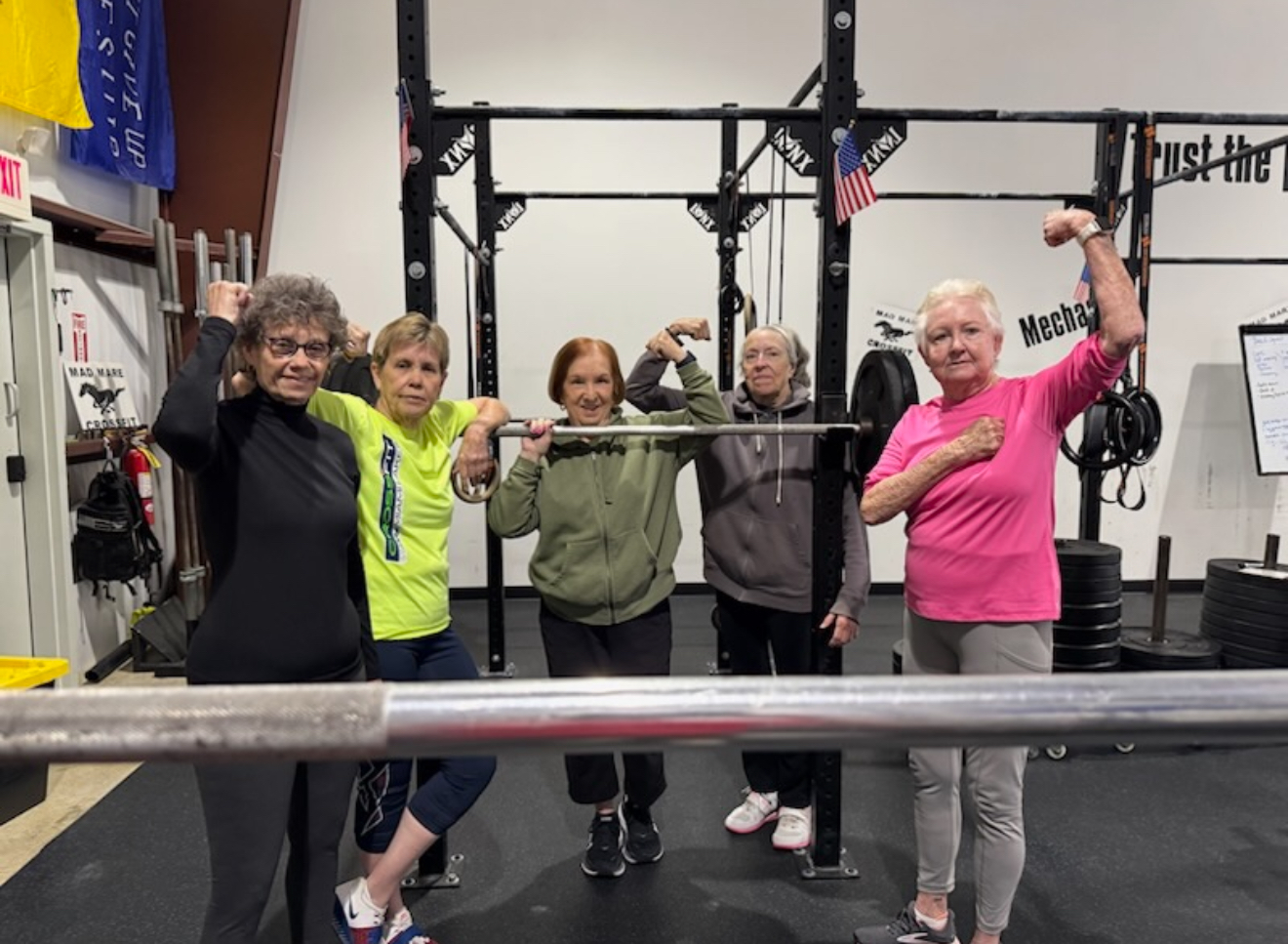
Our demographic may be aging, but our community is stronger than ever. Mad Mare’s Active Adults sessions foster participants work in small teams, encourage one another, laugh through scaling options, and build a supportive environment that keeps everyone coming back. It also helps that our Active Adults absolutely LOVE Coach Vicki!
Ever wonder what taking an Active Adults Class might be like at Mad Mare CrossFit? We’ve summarized a typical class for you below.
Mad Mare CrossFit in Practice: Sample “Active Adults” Class
| Class Segment | Time | Adaptation Detail |
|---|---|---|
| Warm-up | 10-15 minutes | Gentle rowing, walking, or biking → circle stretch with hip and shoulder mobilizations with bands or PVC pipes. |
| Skills / Progressions | 10-15 minutes | Wall-squats + Goblet squats + Single-leg balance scales + learning scaling (2 rounds, slow and focused) |
| WOD | 15-20 minutes | AMRAP: 10 kettlebell swings, 15 box step-ups, 20 sec plank |
| Cool-down / Social Time | 10-15 minutes | Foam roll or stretch, joint prep for daily tasks, then cool-down chat…sometimes over birthday treats. |
Each piece of Mad Mare’s “Functional Fitness for Active Adults” reflects Lyons’s framework: mobility, technique, scaled intensity, functional substitutions, and community.
Why this matters...
- Sustained health and independence: practitioners maintain the ability to kneel, lift grandkids, or walk comfortably.
- Preventing injury: gradual progression and joint care decrease strain from high-impact or overloaded movements.
- Motivation through belonging: shared triumphs and scaled workouts mean everyone can participate and progress—together.
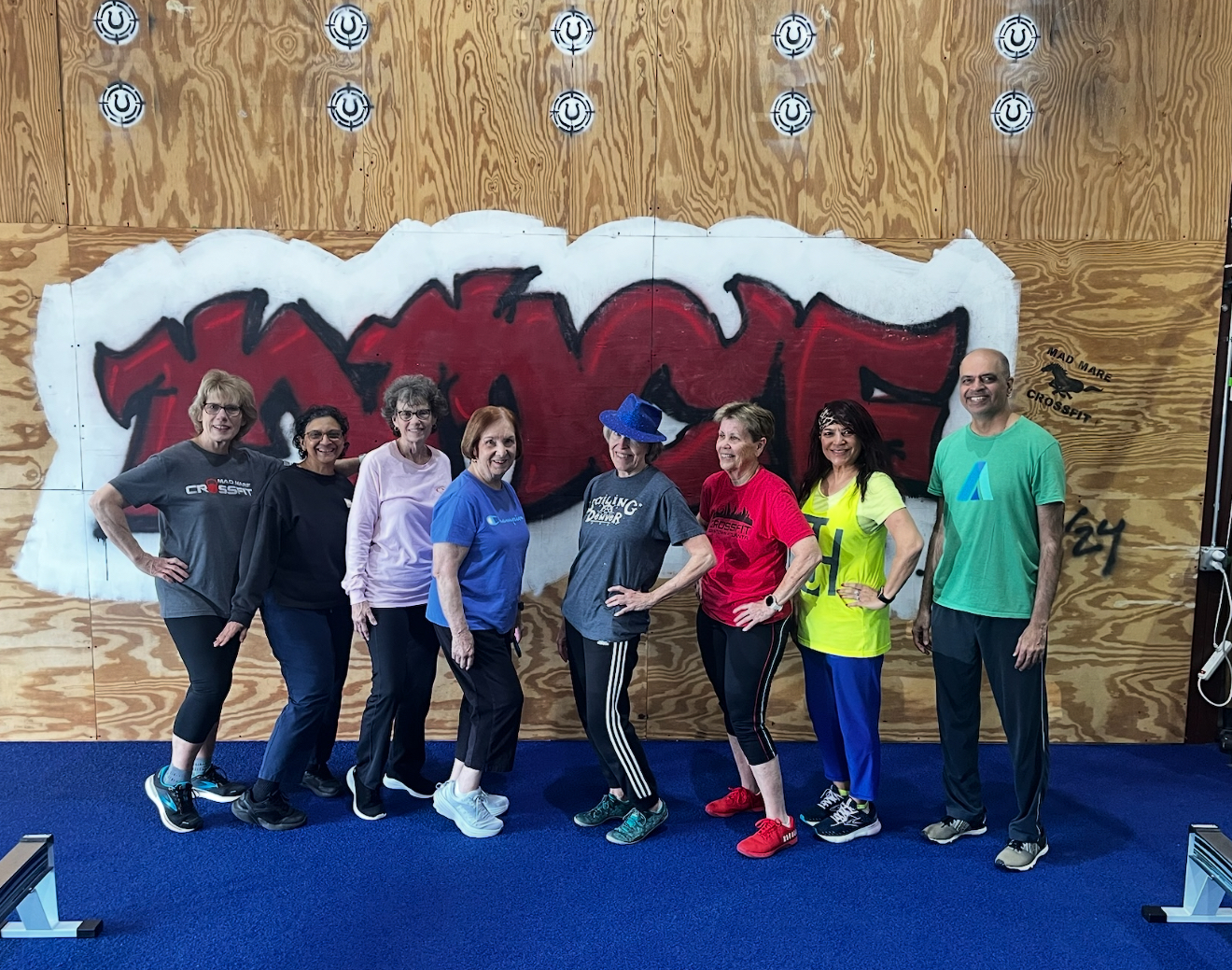
Possible Takeaways for Other Affiliate Owners & Coaches...
- Always start with and extended warm-up and mobility—make them integral, not optional. Get people talking and listening to the coach. Promote community through conversation.
- Scale thoughtfully—by prioritizing movement quality, then adapt stimulus to match fitness goals. One size almost never fits all. Take time for individualization.
- Use creative substitutions—by maintaining workout intent but making gear changes. Creativity is fun! Almost nobody likes a barbell every day. Keep it fresh!
- Leverage community—by designing classes that encourage partner support and social engagement. CrossFit publishes (through CrossFit Affiliate Programming) a 55+ version of their WOD daily. Sometimes this needs some tweaking, but it serves as a great base for working with active adults of all ages.
Mad Mare CrossFit’s Functional Fitness for Active Adults programming demonstrates that Lyons’s well-researched recommendations aren’t just theory, they work beautifully when implemented thoughtfully on the gym floor (or outside the garage door like our friends Pat and Kishore below)!
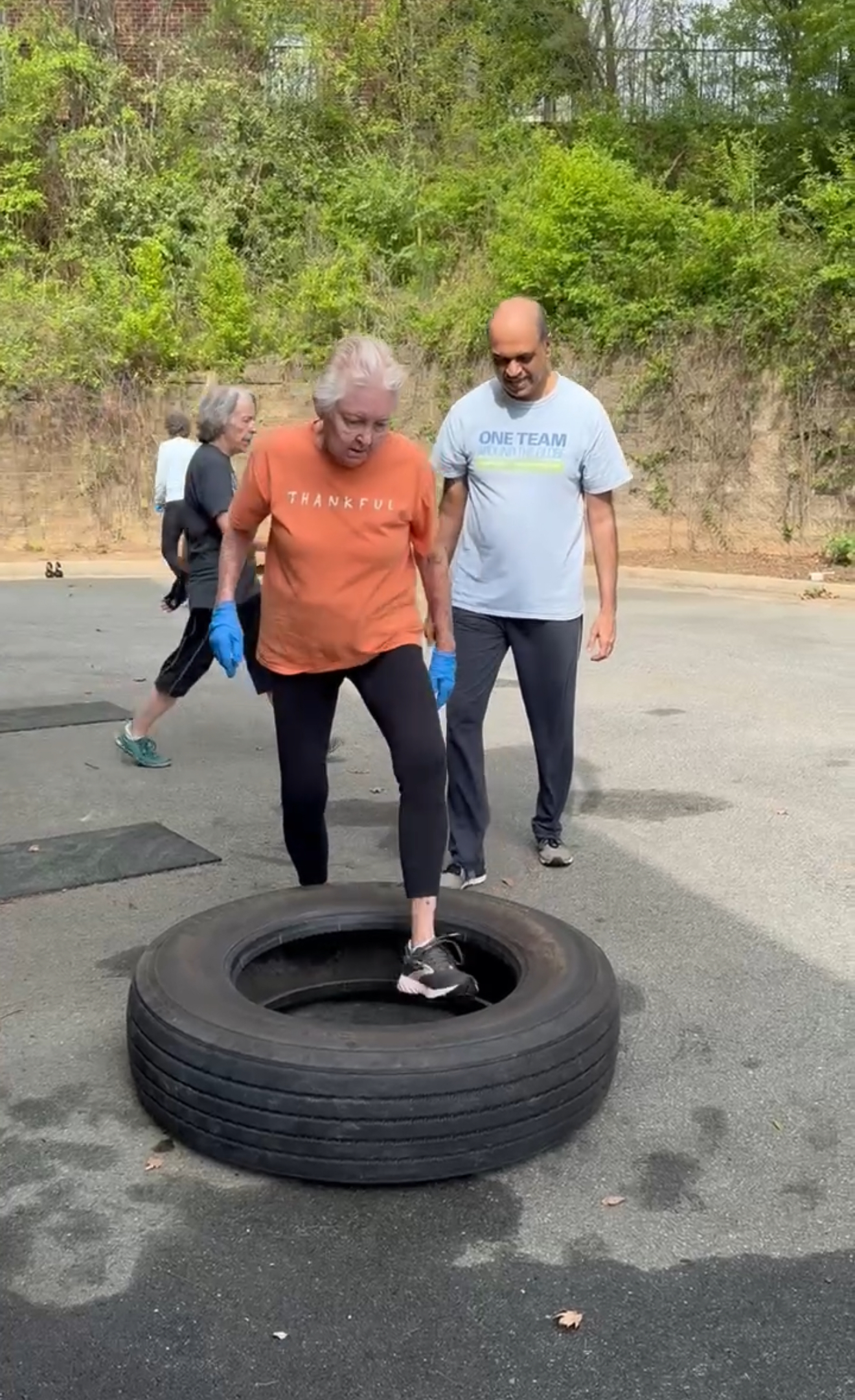
Ready to scale your regular CrossFit classes into Active Adults classes?
A great way to start is simply by extending your warm-up by 5–10 minutes, add two mobility or balance movements per class, and adapt one WOD format this week—perhaps turning a “for time” WOD into a time-capped AMRAP. Who knows? Maybe a “Masters” program at your gym takes off as much as our class did! Members like Bonnie (who is also a CF-L1) will absolutely LOVE the changes!
If you're ready to give it a try, click on the button below and schedule your own FREE consultation. You never know - you might love it as much as everyone else does!
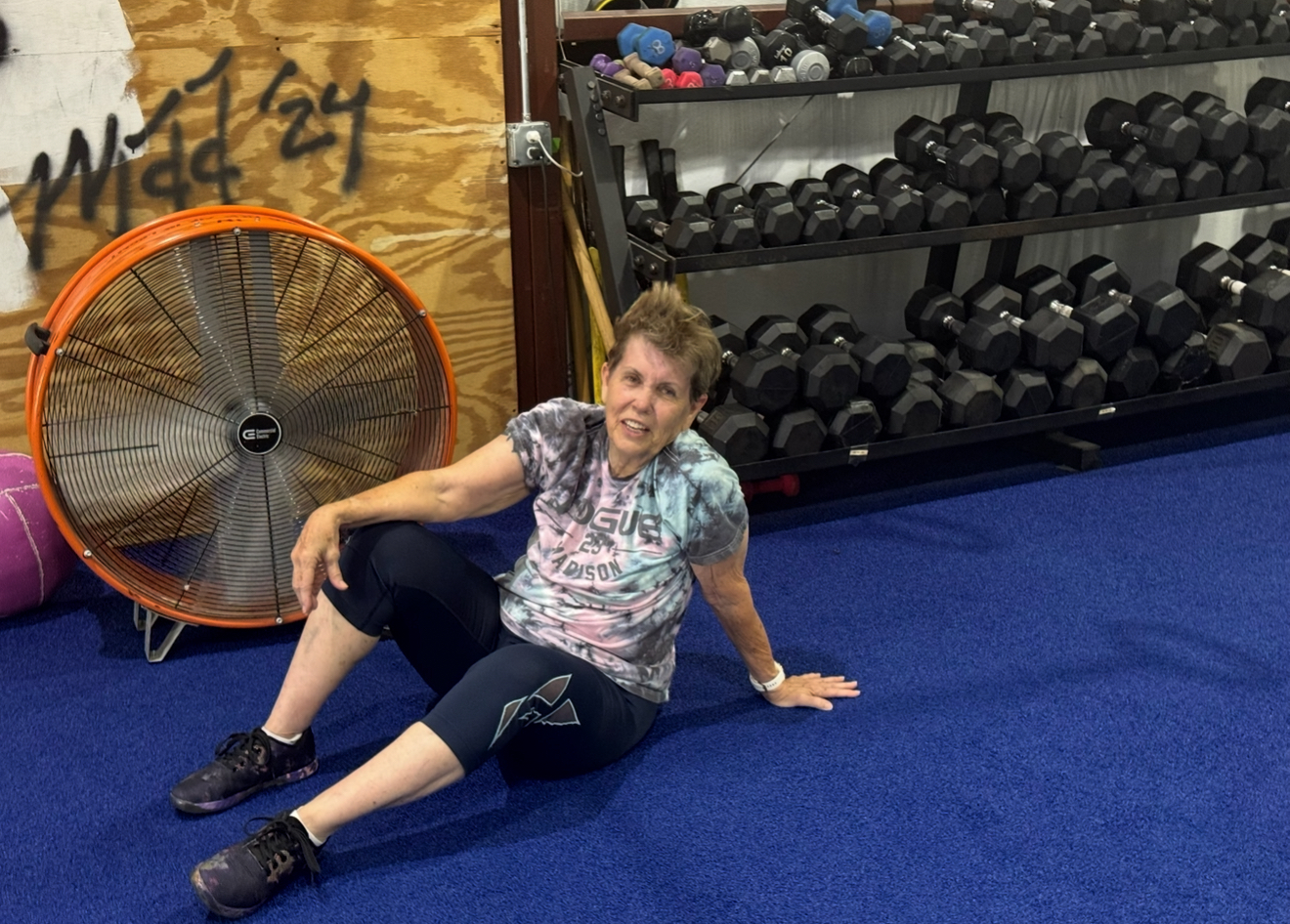
Previous Blogs
